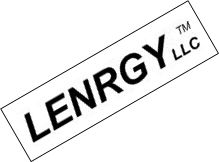Dr. Grimshaw learned of the 1989 cold fusion announcement while fully engaged in his environmental career. He followed the ensuing events closely, but – like most people – lost his engagement after it was rejected by mainstream science. He went on with his work in environmental protection and contamination cleanup.
Years later, he undertook a career change to energy policy. While pursuing the Master of Public Affairs degree at the LBJ School of Public Affairs, he wondered, “Whatever happened to cold fusion?” In seeking the answer, he was astounded at the amount of research and other work being done in the field in spite of its being rejected years before. Public policy for cold fusion was just the thesis topic he was looking for!
After writing “Evidence-based Policymaking for Cold Fusion” and receiving the Masters’ degree in 2008, Dr. Grimshaw continued his cold fusion work at the LBJ School and two other research units at The University of Texas at Austin (UT). They were the Center for International Energy and Environmental Policy (CIEEP) and the Energy Institute. He also formed LENRGY, LLC and has pursued his cold fusion interests both at UT and in his new company.

Professional Report for Master of Public Affairs at LBJ School of Public Affairs
Dr. Grimshaw has focused on four main topics in his pursuit of cold fusion. He began with energy policy analysis, continued with assistance to researchers and other interested parties, and then worked on documenting research records. He has also given many presentations and prepared a number of publications and reports in his efforts for cold fusion outreach and communication. Many of the presentations have been at the International Conferences on Cold Fusion (ICCFs), which are held about every 18 months.
Most recently, Dr. Grimshaw has been working with investigators and other contributors in his LENR Research Documentation Initiative (LRDI). Its objective is to help researchers make sure their records are preserved for additional analysis as the field continues to progress. Many of the prominent investigators began their work in the early years after the 1989 announcement and are now leaving the field because of retirement or health issues. The LRDI began with a pilot project with Dr. Edmund Storms, one of the field’s most active leaders. Dr. Storms’ records have recently been archived at the Marriott Library of the University of Utah. The records of more than 25 other contributors have been documented in the LRDI.

Dr. Storms and Dr. Grimshaw at Storms’ Home in Santa Fe, NM
Dr. Grimshaw has provided assistance and support to investigators and others interested in cold fusion in other ways. For example, he helped National Instruments, a well-known company providing software and hardware for laboratories, to evaluate a cold fusion demonstration. The concept and apparatus were developed by Dr. Francesco Celani of Italy’s National Institute of Nuclear Physics in Frascati (INFN).

P88. Dr. Celani’s Demonstration Reactor and Calorimeter, 2013. Assembly Is 12 to 18 Inches Long.
For Dr. Storms and Dr. Thomas Claytor (also a prominent cold fusion researcher), he helped prepare proposals for a new cold fusion lab in Santa Fe and White Rock, New Mexico. The comprehensive proposals included the planned experimental approach, qualifications and resumes, existing extensive labs and equipment, and their unsurpassed cold fusion experience.

Dr. Tom Claytor’s LENR Lab in White Rock, NM
In his energy policy work for cold fusion, Dr. Grimshaw started with policymaking for research support to secure the benefits of the new phenomenon. Then, realizing that major secondary impacts will hit society if cold fusion is widely deployed, he focused on policies for mitigating the negative effects. For research support policies, Dr. Grimshaw promotes evidence-based policymaking – let the policies be based on the body of evidence for cold fusion. For mitigating adverse impacts of cold fusion as a disruptive new technology, Dr. Grimshaw advocates technology assessment as a proven methodology.

Presentation at 17 International Conference on Cold Fusion (ICCF-17), 2012, Daejeon, South Korea: Mitigation of Adverse Secondary Impacts of Cold Fusion as an Energy Source
